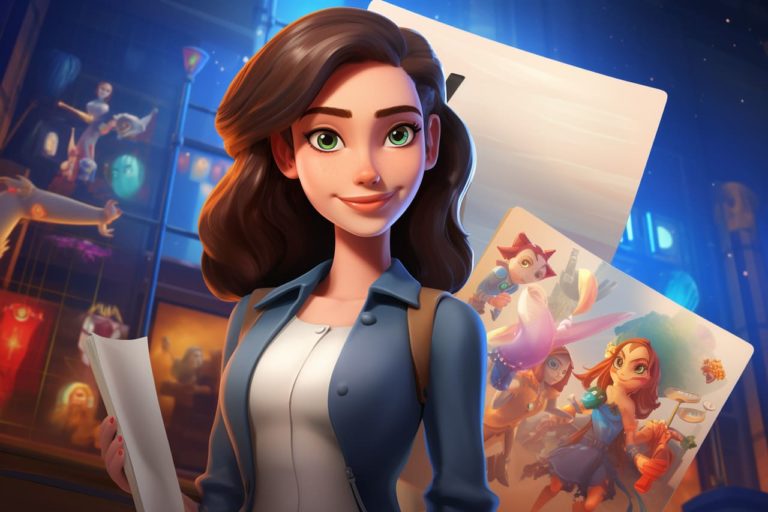So, you’re on the quest for a job, huh? You’ve dusted off your suit, rehearsed your elevator pitch, and even tamed that unruly cowlick on your head. But in this age of digital everything, where even your grandma has a smartphone, the humble paper resume just isn’t cutting it anymore. Enter the visual resume—a trend that’s about as fresh and unexpected as finding a unicorn in your backyard.
The Old Resume: A Walk Down Memory Lane
Ah, the traditional resume. You know, the one—the bland white paper, the Times New Roman font, and bullet points that drone on like a monotone GPS. It’s a relic from the past, a throwback to the days when a handshake was the height of networking, and fax machines were considered cutting-edge technology.
But let’s be honest, the old resume was about as exciting as watching paint dry. It didn’t tell potential employers much about you beyond a laundry list of jobs and skills. It was like trying to describe a rainbow using only shades of gray.
The Visual Resume: Where Art Meets Career
Now, imagine a resume that’s a work of art—a visual masterpiece that not only showcases your skills and experience but also lets your personality shine through. That’s the magic of the visual resume. It’s a canvas where you can paint a picture of your professional journey, and maybe even throw in a few splashes of your quirky self.
Think of it as a career infographic, a digital portfolio, or a visual storytelling tool. It’s a chance to break free from the constraints of traditional resumes and let your creativity run wild. After all, why settle for black and white when you can have a resume that’s bursting with color?
The Elements of a Visual Resume
Now, before you start doodling all over your resume, let’s talk about what makes a great visual resume. Here are the key elements to consider:
1. Visual Cohesion
Your visual resume should have a cohesive design that ties everything together. Think about color schemes, fonts, and layout. It should look like it was created by someone who knows their way around design software, not your cat walking across the keyboard.
2. Storytelling
Use visuals to tell a story about your career journey. Think of it as a comic strip where each panel represents a different job or achievement. Show, don’t just tell. Use images, icons, and graphics to convey your experiences and skills.
3. Infographics
Infographics are your secret weapon. They can turn boring data into eye-catching visuals. Use them to showcase your achievements, quantify your impact, or highlight your key skills. Just remember, less is often more when it comes to data.
4. Multimedia Elements
Don’t be afraid to sprinkle in some multimedia elements. You can embed videos, links to your portfolio, or even QR codes that lead to your LinkedIn profile. It’s like adding a dash of spice to your resume salad.
5. Personality
Let your personality shine through. Include a section that’s not all about work—maybe a fun fact about yourself or a quirky hobby. It’s a chance to show that you’re not just a cog in the corporate machine; you’re a human with interests and passions.
6. Accessibility
Remember, not everyone will view your visual resume on a fancy computer screen. Make sure it’s accessible and readable on different devices. You don’t want potential employers squinting at their phones trying to decipher your masterpiece.
The Dos and Don’ts of Visual Resumes
Now that you’re all fired up about creating a visual resume, let’s go over some dos and don’ts to keep you on the right track:
Do:
- Keep it professional: Yes, you can get creative, but this is still a resume. Don’t go overboard with wacky fonts or neon colors.
- Tailor it: Customize your visual resume for the job you’re applying for. Highlight the skills and experiences that are most relevant.
- Proofread: Just because it’s visual doesn’t mean you can skip the spellcheck. Typos and grammatical errors still matter.
- Test it: Make sure your visual resume looks good on different devices and platforms. You want it to shine everywhere, not just on your Macbook Pro.
Don’t:
- Overload it: Visual resumes are meant to be visually appealing, but don’t cram too much into one page. Keep it clean and easy to navigate.
- Get too personal: While a touch of personality is great, don’t overshare. Your potential employer doesn’t need to know about your pet iguana’s dietary habits.
- Forget the basics: Remember to include your contact information and a link to your traditional resume. Some employers may prefer the old-school version.
- Rush it: Creating a visual resume takes time and effort. Don’t rush through it like you’re in a supermarket on Black Friday. Take your time to make it shine.
Conclusion: Your Visual Resume, Your Masterpiece
In the world of job hunting, your resume is your first impression, your foot in the door, your ticket to the big show. So why settle for a cookie-cutter document that’s as forgettable as yesterday’s lunch?
With a visual resume, you can turn your career story into a visual masterpiece. It’s your chance to stand out from the crowd, to showcase your skills and personality in a way that no plain old piece of paper ever could.
So, whether you’re an artist, a marketer, a software engineer, or a unicorn trainer (hey, we don’t judge), consider giving the visual resume a whirl. Who knows? It might just be the brushstroke of brilliance that lands you the job of your dreams.
